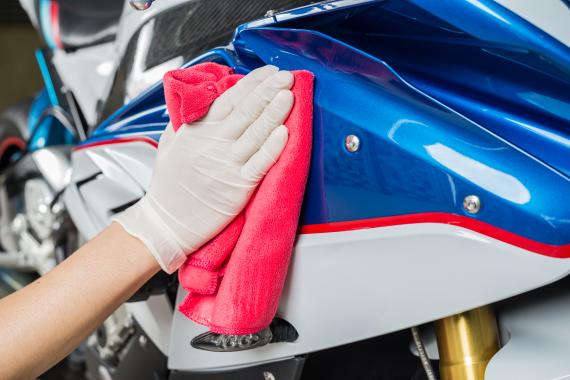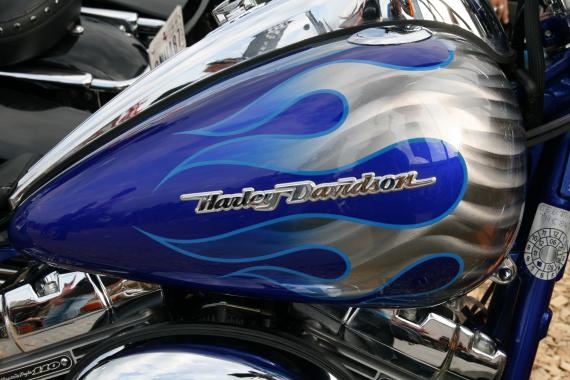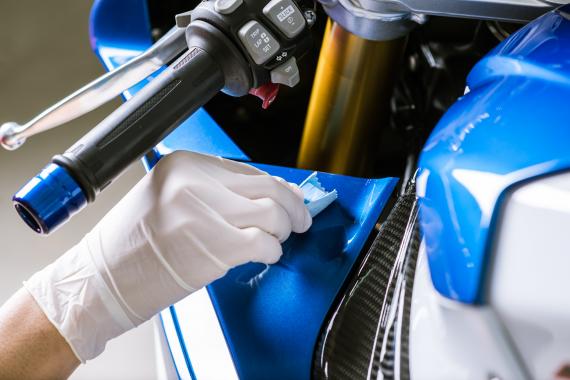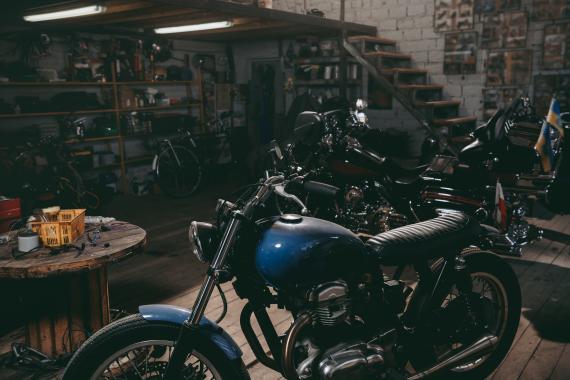Summary
– Step 1: Wash your motorcycle
– Step 2: Choose the right location
– Step 3: Empty the carburetors
– Step 4: Inflate the tires
– Step 5: Fill the tank
– Step 6: Preserve the battery
– Step 7: Protect fragile parts
– Step 8: Cover your motorcycle
Suppose you prefer to ride on a beautiful summer day because you have a holy horror of accumulating kilometers in the rain or cold and having to clean your bike in every nook and cranny religiously. In that case, it may be time to store your bike for this winter!
Here are all the steps to follow to find it in perfect condition for beautiful days.
Equipment to put your motorcycle in winter storage
|
Equipment |
Price |
|
Can of oil |
Starting at $10. |
|
Rag |
Free from your recovery materials. |
|
Allen key |
Starting at $2. |
|
Compressor |
Starting at $59. |
|
Sponge |
$1 approx. |
|
Cover or sheets |
Around $30. |
|
Dishwashing liquid |
About $2. |
|
Container |
$1. |
|
Phillips screwdriver |
Starting from $3. |
1. Wash your motorcycle

– Wash your bike with care, avoiding washing stations if possible. A jet of water, a non-corrosive washing product (motorcycle or not), a sponge (non-scratching), and elbow grease are sufficient.
– Wipe your bike well and use a compressor to remove any remaining water in the corners of the motorcycle.
– Of course, a classic car wash can do the trick if it is close to your home.
Good to know: use high-pressure wash stations with caution. The force of the jet can damage some old paint, remove stickers, or attack joints. It is advisable to use them by scrupulously respecting the indications on the distances to position the high-pressure hose.
2. Choose the right location
– For future storage of your machine, store your motorcycle in a place where you won’t have to move it continuously to pick up this or that object in your garage.
– Avoid damp or traffic areas.
3. Empty the carburetors
– If your motorcycle has an injection, go directly to step 4.
– If your bike still has carburetors :
◦ Close the fuel valve and use the bleed screw if the valve has one.
◦ Collect the fuel in a container and return it to the tank.
◦ If your motorcycle does not have a bleed valve (or if you don’t want to bother), leave the engine running to drain off the remaining fuel.
4. Inflate the tires
– Once the tires are cold, inflate them with 200 grams more than the manufacturer’s recommendations, which are always made cold. This way, the tire casing will not be deformed with the loss of air and the motorcycle’s static position.
– If you don’t have a compressor at home, go to a service station and add the extra 200 grams knowing that the tire pressure usually is cold.
Good to know: when your motorcycle is running, the tires heat up from the air they contain. Therefore, tire pressures will vary depending on use. For example, if the recommended tire pressure is 2.5 bars, the pressure will increase to more than 3 bars when you ride for several tens of kilometers. If you adjust the tire pressure at that time, your value will be higher than the recommended value. You will not run out of air, nor will you be over-pressurized. If your pressure is below the recommended value, you may still have a higher value when hot.
5. Fill the tank

– Using a canister or bottle previously filled with gasoline, fill the tank to the maximum.
– Close the cap.
6. Preserve the battery
– Remove the saddle to access the battery.
– Disconnect the battery.
– You can also connect it to a charger specially designed for winter storage.
7. Protect fragile parts

– Parts such as turntables or chrome can oxidize over time, especially if your motorcycle is stored in a reasonably humid place. To prevent this, wipe these parts with a cloth lightly dampened with oil.
– Block the exhaust outlets with a greasy rag.
– Grease the cables.
8. Cover your motorcycle
– To cover your motorcycle for the winter, many OEMs offer tarpaulins or blankets. Choose a breathable model to avoid condensation. A sheet or blanket can be excellent protection against dust in a garage.
– Before covering it, blow or vacuum it to remove the last dust.
– Position the cover or tarpaulin once the motor has cooled down.
– Secure your motorcycle with one or more anti-theft locks to prevent theft, depending on where you store it for the winter
– Strap either with fasteners fitted to the blanket or with string by making small holes in the sheet.
Hope the above helps you prepare for winter. Remember to share this post and leave your comment below.
Read more here:


2 comments
[…] – Are you a biker? Here’s how to store your motorcycle for the winter. […]
[…] – Storing Your Motorcycle for the Winter […]